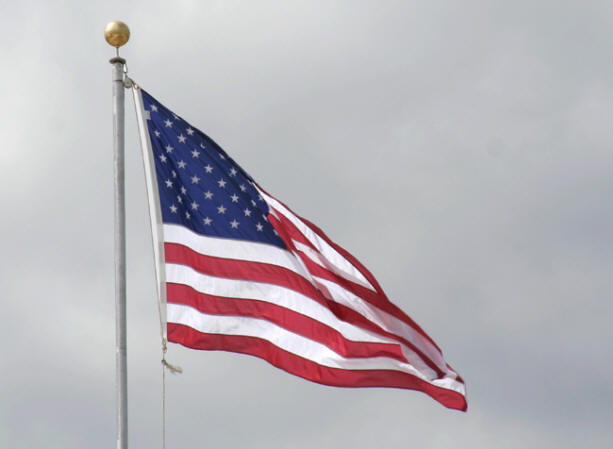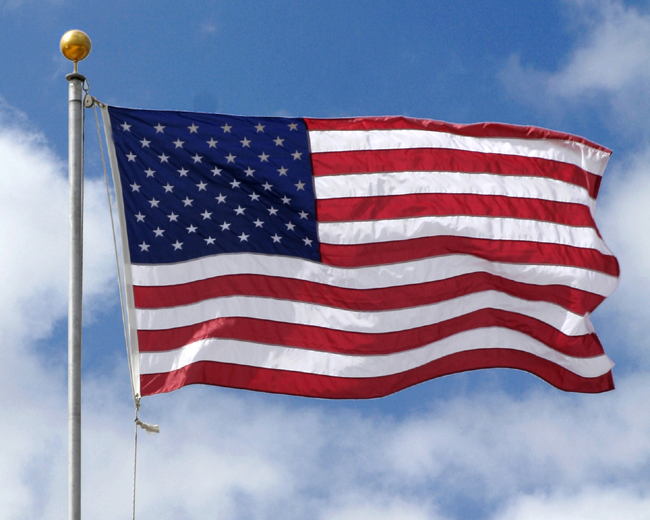American Flag
|
|
This Site:
|
The New Englanders had also a "pine-tree flag" as well as a "pine-tree shilling." The engraving below is a reduced copy from a map published in Paris in 1776. The London Chronicle, an anti-ministerial paper, in its issue for January, 1776, described the flag of an American cruiser that had been captured: "In the Admiralty Office is the flag of a provincial privateer. The field is white bunting; on the middle is a green pine-tree, and upon the opposite side is the motto 'Appeal to Heaven.' "
The First American Stars and Stripes Flag
Continental Congress Resolution Establishes the Official United States Flag
Paul Jones was appointed to the Ranger on June 14, 1777, and he claimed that he was the first to display the stars and stripes on a naval vessel. The Ranger sailed from Portsmouth, New Hampshire, on November 1, 1777. It is probable that the national flag was first unfurled in battle on the banks of the Brandywine, September 11, 1777, the first battle after its adoption. It first appeared over a foreign stronghold, June 28, 1778, when Captain Rathbone, of the American sloop-of-war Providence, with his crew and some escaped prisoners, captured Fort Nassau, New Providence, Bahama Islands. The captors were menaced by the people, when the stars and stripes were nailed to the flagstaff in defiance. John Singleton Copley, the American-born painter, in London, claimed to be the first to display the stars and stripes in Great Britain. On the day when George III. acknowledged the independence of the United States, December 5, 1782, he painted the flag of the United States in the background of a portrait of Elkanah Watson. To Captain Mooers, of the whaling-ship Bedford, of Nantucket, is doubtless due the honor of first displaying the national flag in a port of Great Britain. He arrived in the Downs, with it flying at the fore, February 3, 1783. That flag was first carried to the East Indian seas in the Enterprise (an Albany-built vessel), Captain Stewart Dean, in 1785. When Vermont and Kentucky were added to the union of States the flag was altered. By an act of Congress (January 13, 1794) the number of the stripes and stars in the flag was increased from thirteen to fifteen. The act went into effect May 1, 1795. From that time until 1818, when there were twenty States, the number of the stars and stripes remained the same. A committee appointed to revise the standard invited Captain Samuel C. Reid, the brave defender of the privateer Armstrong, to devise a new flag. He retained the original thirteen stripes, but added a star for every State. That has been the device of the flag of the United States ever since. In 1901 the field of the flag contained forty-five stars. American Flag in the Civil War
During the Civil War, the flag evolved several times. At the beginning of 1861, the Union Flag had 33 stars. On January 29, 1861, Kansas was admitted to the union, and a star was added (for a total of 34). The new 34 star flag became official on July 4, 1861. The flag had four rows of 7 stars, and the center row had 6 stars. On June 20, 1863, West Virginia became a stat, and another star was added to the flag. This 35 star flag had 5 rows of 7 stars (7X5=35). This 35 star flag flew over Union victories at Gettysburg and Vicksburg, and was the flag at the end of the war, when Lee surrendered at Appomattox. American Flag in World War II
Modern American FlagAlaska became a state on January 3rd, 1959, and a 49th star was added to the flag. This flag was short lived, as it was replaced by the modern 50 star flag on July 4, 1960, as Hawaii became our 50th state. This flag remains the flag of the United States today. The stars are placed in a staggered pattern . . . 5 rows have 6 stars, and 4 rows have 5 stars ( 5X6 + 4X5 = 50). It is a clever arrangement which creates an attractive flag. |
|
|
||
|
|
Site Copyright 2003-2018 Son of the South. For Questions or comments about this collection, contact: paul@sonofthesouth.net |
|
|
Are you Scared and Confused? Read My Snake Story, a story of hope and encouragement, to help you face your fears. |
||
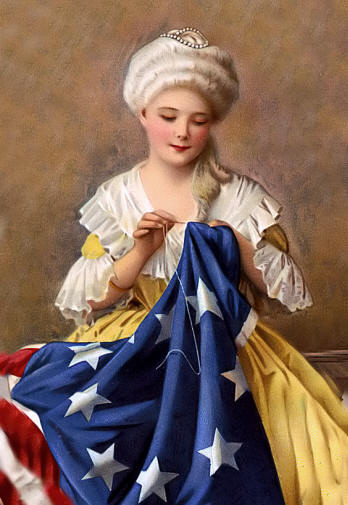 Flag,
NATIONAL. During the formative years of the country, each
colony had its own banners and flags, and the army and navy of the
united colonies, at first, displayed various flags; some colonial,
others regimental, and others, like the flag at
Flag,
NATIONAL. During the formative years of the country, each
colony had its own banners and flags, and the army and navy of the
united colonies, at first, displayed various flags; some colonial,
others regimental, and others, like the flag at
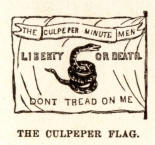
 The
Culpeper minutemen, who marched with
The
Culpeper minutemen, who marched with
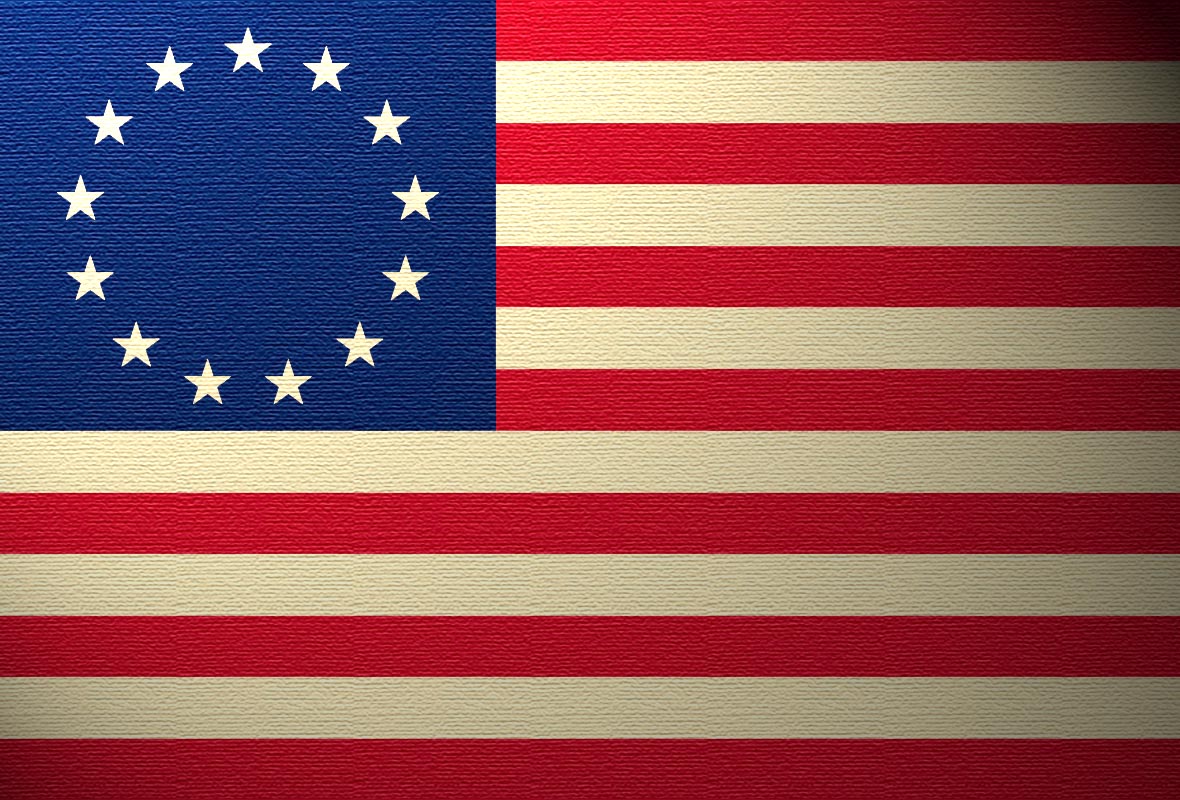
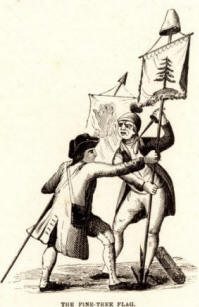 It is believed that the
first American flag bearing thirteen red and white
stripes was a Union flag presented to the Philadelphia Light Horse
by Captain Abraham Markoe, a Dane, probably early in 1775. A "Union
flag" is mentioned as having been displayed at a gathering of Whigs
at
It is believed that the
first American flag bearing thirteen red and white
stripes was a Union flag presented to the Philadelphia Light Horse
by Captain Abraham Markoe, a Dane, probably early in 1775. A "Union
flag" is mentioned as having been displayed at a gathering of Whigs
at 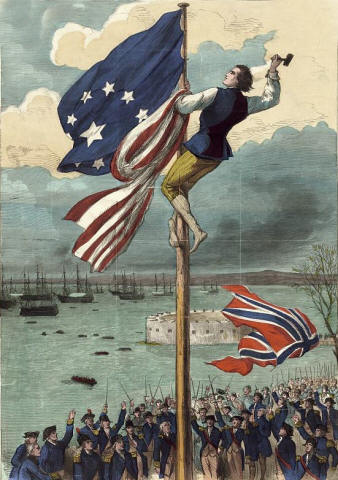 Finally,
the necessity of a national flag was felt, especially for the marine
service, and the
Finally,
the necessity of a national flag was felt, especially for the marine
service, and the 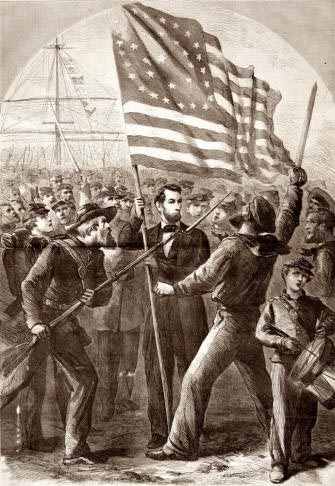
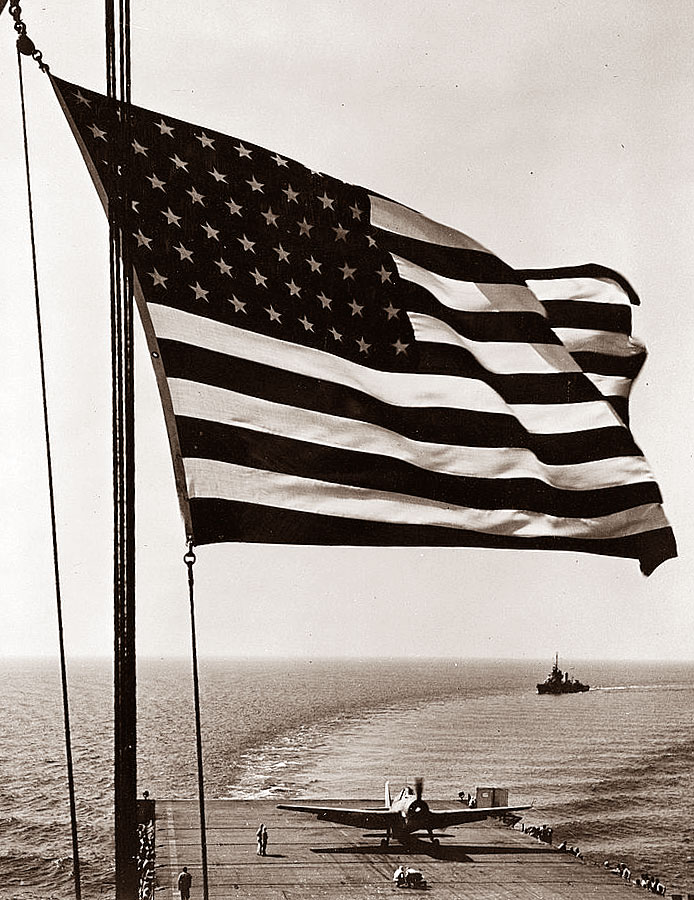 In
World War II, the American Flag had 13 stripes, and 48 stars, with
the stars arranged in rows and columns in a regular pattern (When
Alaska and Hawaii became states, the pattern of stars was offset to
accommodate the two new stars). The photograph at right shows the
flag of World War II. The photograph shows the flag flying over an
American Aircraft Carrier, and a fighter can be seen on the deck of
the carrier, preparing to take off. While this flag is very similar
to the modern American flag, there is a subtle difference due
to the arrangement of the stars. I have found that many World War II
veterans feel a particular affinity to this specific flag. I often
hear them describe it as the "Flag that I Fought Under". I get the
impression that they distinguish it somewhat from the modern flag,
perhaps reflecting a perception that the country was different as
well.
In
World War II, the American Flag had 13 stripes, and 48 stars, with
the stars arranged in rows and columns in a regular pattern (When
Alaska and Hawaii became states, the pattern of stars was offset to
accommodate the two new stars). The photograph at right shows the
flag of World War II. The photograph shows the flag flying over an
American Aircraft Carrier, and a fighter can be seen on the deck of
the carrier, preparing to take off. While this flag is very similar
to the modern American flag, there is a subtle difference due
to the arrangement of the stars. I have found that many World War II
veterans feel a particular affinity to this specific flag. I often
hear them describe it as the "Flag that I Fought Under". I get the
impression that they distinguish it somewhat from the modern flag,
perhaps reflecting a perception that the country was different as
well.